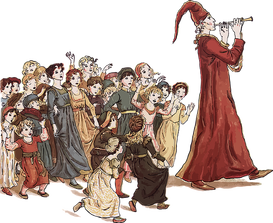
Another thing to notice about that saying is the implication that our players are paying us. There are many ways that we can ask for payment and some work better than others, depending upon the market sector in which your game falls. These are the main monetisation methods for games software:
- Premium - The player buys your game and then they can play it.
- Freemium - The player gets your game for free and can pay money to get more in-game resources.
- Shareware - The player gets your game for free but paying will unlock more features or levels.
- Adware - The game is entirely free to play but adverts are shown to the user.
- Donationware - The game is free but the creator asks for donations to support future developments.
The premium model is the most common in the desktop and console industry. The advantages to the developer are that you get all of your money up front and there is no real commitment to support the game once it has already been paid for. A disadvantages is that it can be hard to compete and get exposure when market places become crowded, most players will want some certainty before they will commit money upfront for a game. Another disadvantage is that once the sale is made, that is all the money you will get from that particular player and getting another purchase would usually require the development of a sequel. Finally, premium games are often more susceptible to software piracy as once the copy protection has been cracked the game can be posted to illegal software sites for people to download and play for free.
The freemium model is the most successful model in the mobile gaming sector, and this success is spreading to consoles and the desktop as well. An advantage is that you can offer your game as a free download which maximises the chance that a player will try your game. Another advantage is that you can make repeat sales to the same player and keep earning money all the time that your game still has players. Only a small percentage of players generally spend on in-app purchases, but those that do can often spend a lot if you give them the opportunity. In terms of disadvantages, you need to make sure that you have ongoing support to maximise player retention and it can be quite a delicate balance so that there is a good incentive to purchase at the same time as not making your game too easy once purchases are made.
Shareware games usually take the form of a free playable version of the game with additional features or levels that can be unlocked by payment. The main difference between this and the freemium is that there is usually just one payment to unlock all the features in a game. This has most of the disadvantages of the premium and freemium models with few of the advantages. With a premium game, if you have ten thousand downloads you will earn money from every one of them. A shareware game might get ten times as many downloads but will get a hundred times less sales. Particularly if you are targeting a small niche interest, you can't really afford to waste all those potential money making opportunities.
Adware games make the developer money by giving away some of the content space to allow advertisers to show adverts. This is very common in mobile gaming and on the web, much less so on consoles and the desktop. It's often used in combination with the freemium model so that the developer can also earn some money from those players that don't make in-app purchases. The problem with adware is that you need large volumes of traffic in order to make a nominal amount of money. It is realistic to expect to make about two cents per download on advertising meaning that a million download game might make in the region of twenty thousand dollars. Even if you can create a game with that sort of mass market appeal, there are probably better ways to monetise it than relying on adverts alone.
Donationware is the game development equivalent of begging on the street. Don't do it, it's not professional.
Most of the games released by Exobyte to date have primarily used the adware monetisation model. With three and a half million downloads across those games, it has been reasonably successful for us and more than covered development costs. I always felt that we were leaving a lot of money on the table with this strategy so with our latest game "Pish Posh Penny Pusher" we've gone fully freemium. It was necessary to design the game from the beginning with this model in mind, it's not something we could easily have changed retrospectively and added to our existing games. Pish Posh Push has a shop screen that allows the purchase of coins (to play the game) and tickets (to buy boosts), it also offers rewarded video content where a player can get extra coins by watching a sponsored video.
The combination of In-App Purchases and rewarded video in Pish Posh Push has been far more successful than using only adverts. We have thirty thousand downloads since releasing the game six weeks ago. With the freemium model our revenue per download is closer to fifty cents instead of the two cents per download that we'd expect using advertising. The good thing about this is that we can keep working on the game to add content and improve player retention and that will maintain our revenue levels in the long term.




 RSS Feed
RSS Feed